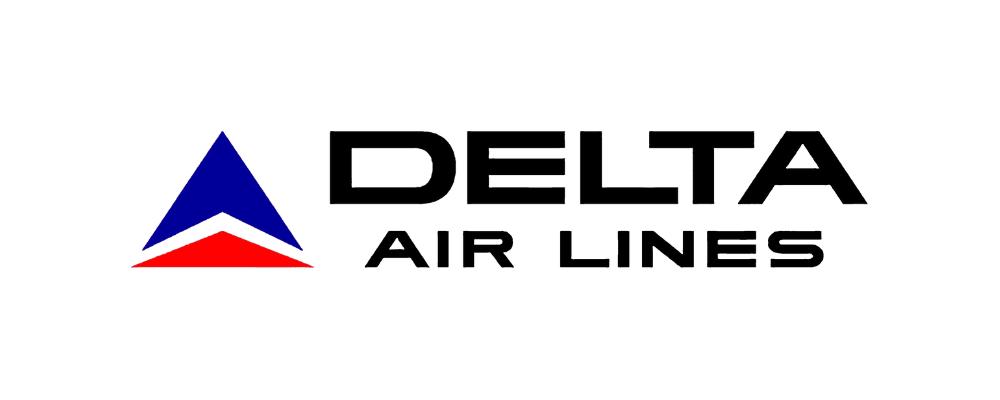Two Delta Network Planning team members provide an inside look at some of the decisions that shape where and when customers can fly.
Why does Delta fly to some cities and not others? Who is making the decision to introduce a new flight to Italy? Behind every route in Delta’s network is a complex web of planning and data – all carefully orchestrated by the airline’s Network Planning team.
Understanding why Delta flies certain routes isn’t just about geography – it’s about creating seamless connections and the critical pathways that keep global travel running smoothly.
Two people from Delta’s Network Planning team, Jooyoung Kim and David Hart, answer the questions you’ve always had about Delta’s network and dive deep into the decisions that shape where and when you can fly.
THE PROCESS
When adding new routes to Delta’s portfolio, the approach varies by market, but the planning process can span between one to five years.
“We have to stay fairly nimble, but none of our new markets are popping up in the middle of nowhere,” said Jooyoung Kim, Director – International Network Planning. “We’re always monitoring trends.”
As an example, for summer 2025 routes, planning may begin in winter 2023, with the first half of the year devoted to brainstorming and narrowing down options. What follows is a multi-management process, meeting with teams such as cross-commercial leadership as well as Joe Esposito, S.V.P. – Network Planning, to look at some of the factors driving the introduction of new routes: short-term customer demand, Delta’s financial performance, the allocation of resources like aircraft and staffing, competitive positioning, and the strategic value of the route.
So how does a customer’s traveling behavior come into play? In short, customer trends tell Delta where people want to fly, how often they want to fly, when they want to fly, where they want to sit on an airplane, if they want to fly nonstop and much more. All of this data plays a crucial role in shaping key decisions.
“As our customers value experiences more than they did pre-pandemic, we are seeing increased demand to hot leisure destinations in the winter, so it doesn’t make sense to keep the same footprint year-round,” said David Hart, Managing Director – Domestic Network Planning. “We’re also looking at flying different time channels, because we’re seeing that the very early flight times used to be the most popular, but now more people are traveling later in the morning.”
Once the Network Planning team collects this customer data, it can then be cross-referenced with the airline’s resources. With a fixed fleet size and crew resources each month, the Network Planning team has to find markets that will provide stable customer demand, allowing Delta to best utilize its resources all year.
With travel hitting its peak in the summer, it’s important for the Network Planning team to pinpoint popular destinations in the winter to maintain that demand. In a nutshell, it’s all about finding the right contrast in opportunity. This is why Delta will be flying its largest-ever winter Latin schedule from Minneapolis-St. Paul later this year.
Additionally, the European market isn’t historically as popular outside of summer, but the international Network Planning team was able to recognize that customers were beginning to spread their travel out across the year to certain destinations.
“With Italy, the peak summertime can be super hot, so customers are starting to travel to that destination outside of those months. Usually, March to December can be strong,” said Kim. “Every year you’ll see Delta extend services for that reason.”
Customers can now enjoy extended seasonal service to Italy with John F. Kennedy International Airport to Venice and Milan, and Hartsfield-Jackson Atlanta International Airport to Rome.
DELTA HUBS
A major difference between Delta’s core and coastal hubs is the role they play in the airline’s network. While ATL, MSP, Salt Lake City International Airport and Detroit Metropolitan Wayne County Airport are critical connecting hubs that help customers reach destinations around the world, Delta’s coastal hubs – Los Angeles International Airport, Seattle-Tacoma International Airport, Boston Logan International Airport, LaGuardia Airport and JFK – see heavy local traffic as they mainly serve customers living in or traveling to those cities.
“As we look at some of these big coastal hubs, we want to have a broad offering for those customers,” said Hart. “As the demand profile for our customers change in the winter, we need to be sure to allocate our resources to places people in somewhere like southern California want to go.”
Out of this thinking, Delta’s latest ski portfolio was born. This winter 2024 lineup features a robust schedule out of LAX, where Delta will launch daily nonstop service to Jackson Hole and new Saturday service to Sun Valley, Idaho, with customers in MSP, ATL and SLC also benefitting from additional service to iconic ski destinations throughout the West.
As Delta moves forward into 2025, it’s working on strengthening its presence in the Southeast, with its attention turned toward its hometown: Atlanta.
“Our efforts in our coastal hubs are not complete, but we’ve made considerable investments there and are proud of what we have accomplished,” said Hart. “Atlanta is our biggest hub in the Southeast, and the Sun Belt region is leading the way in demand recovery. We’re capitalizing on those demand trends, and Atlanta is the premier Southeastern hub in the U.S.”
PARTNERSHIPS
When it comes to partnerships, they enable Delta to grow more by serving secondary markets in regions that Delta may not be able to operate nonstop service to. While Delta has reached nearly full synergy with some of its partners, like Air France, KLM and Virgin Atlantic, there are additional opportunities for growth with other partners, like Korean Air and LATAM Airlines.
Delta and Korean Air connect more than 2,000 passengers a day each way through Incheon to destinations across Asia. That’s more than our competitors connect to the region through Tokyo Narita and Haneda hubs combined.
“I’m excited about our growth in South Korea and our work with Korean Air,” said Kim. “This partnership can take Delta even further toward being the No. 1 franchise in Asia.”
Delta’s alliance with LATAM, which just celebrated its one-year anniversary last fall, has also produced immense growth, more than doubling capacity from Delta’s Atlanta hub since the initial launch and nearly doubling capacity to LATAM’s South American hubs, unlocking connections and opportunities for customers in more than 300 destinations.
“The beauty of the airline industry is you can allocate this product you’re selling, and you don’t need to have it in the same place at the same time – because it’s so mobile,” said Hart. “We can capitalize on trends in short order. It’s the nimbleness of our product that allows us to experiment, and that’s what makes this job fun.”
© 2024 Delta Air Lines, Inc.
“Delta Air Lines is one of the major airlines of the United States and a legacy carrier. One of the world’s oldest airlines in operation, Delta is headquartered in Atlanta, Georgia.”
Please visit the firm link to site





